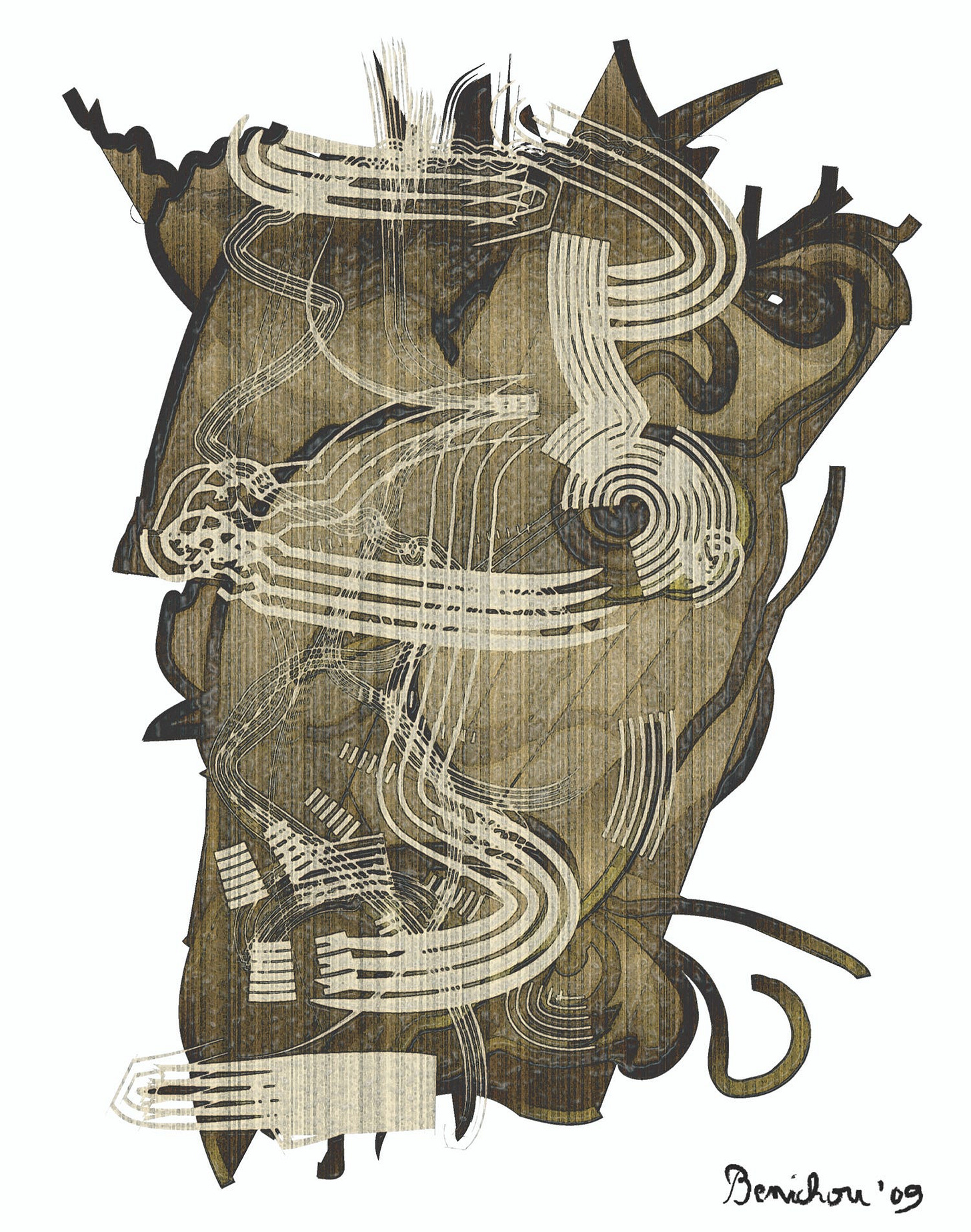Can You End Existential Suffering?
Experiment Genuinely with this Technique and Transform Your Life!
Existential Suffering
On the mundane plane, existential suffering can manifest as a pervasive sense of dissatisfaction, excess thinking, boredom, or periodic disconnection in everyday life. It often stems from routine experiences that feel empty or lack meaningful engagement, leading individuals to question the purpose or value of their daily activities.
It can also manifest as discomfort or anguish arising from confronting the inherent meaninglessness, uncertainty, and isolation of existence. It often involves grappling with fundamental questions about purpose, identity, worth, and mortality.
In the Beginning, there’s always a “THINKER”
I imagine a great Eastern teacher like Ramana Maharshi, an Indian sage renowned for his teachings on the nature of the self, would provoke us by saying that "If you think you think, you are delusional". Common sense within this line of inquiry would imply that the act of thinking is not the “thinker”. So, who’s the thinker?
What’s the Big Fuss About Witness Consciousness?
Witness consciousness, often discussed in Eastern philosophies and spiritual practices, refers to a state of awareness where one observes thoughts, emotions, and experiences without attachment or identification. It's similar to being or discovering your inner "observer" or "witness" that remains untouched by the fluctuations of the mind (thoughts and concepts) as well as external circumstances.
It also suggests that while there is thinking going on, I as “myself”, do not originate what I consider my thoughts (cognition)—the brain does.
Research in neuroscience, particularly studies on brain activity and timing, supports the notion that our awareness follows neural processing. Techniques like electroencephalography (EEG) and magnetoencephalography (MEG) allow scientists to measure the timing of brain activity and observe the sequence of neural events leading up to conscious awareness.
The idea of "second-hand" consciousness refers to the fact that by the time we become aware of something (a thought, an idea, or a sound), the brain has already made some sense of it. Our conscious mind receives processed information, not the raw sensory data itself.
This understanding aligns with the idea that what we perceive as reality is a constructed experience, mediated by the brain's processing capabilities.
It raises intriguing questions about the nature of consciousness, free will, and the reliability of our perceptions. While our experience feels immediate, it is, in essence, a refined and interpreted version of the world, presented to our conscious mind—after the fact!
To summarize: what we call our consciousness (“I” or “me”) is not only a second-hand process (the brain is the thinker), but it relates to how our perceptions and interpretations are also influenced by prior knowledge, expectations, and biases. Our conscious experience is shaped by more than just the immediate belief that there is an “I” or “me” present.
Distinction from the Ego-Mind
A common misunderstanding is confusing this witness consciousness with the ego or the thinking mind. The ego identifies with thoughts, emotions, and a self-image, whereas witness consciousness transcends these identifications. It observes without judgment or attachment, offering a pure form of awareness. I like to call it free attention.
Common Misunderstandings that Lead to Suffering
1. Misidentification with Thoughts: Many people believe they are their thoughts, leading to identification with mental states and their content. This identification can result in suffering, as one becomes entangled in the mind's narrative. Let me illustrate with some obvious examples:
Self-Criticism and Low Self-Esteem
Scenario: Jane frequently thinks, "I'm not good enough" or "I always mess things up." These thoughts arise from past experiences of failure or criticism.
Misidentification: Jane believes these thoughts are true reflections of her worth and capabilities, leading her to identify as someone who is inherently flawed or incapable.
Impact: This identification with negative thoughts contributes to low self-esteem and a sense of inadequacy, influencing her behavior and limiting her potential.
Anxiety and Projections
Scenario: Jack often experiences anxiety and has thoughts like, "What if I lose my job?" or "What if something terrible happens to my family?" These thoughts trigger strong emotional reactions.
Misidentification: Jack identifies strongly with these anxious thoughts, believing them to be an accurate prediction of the future. He ends up living in a state of constant worry and fear.
Impact: This identification leads Jack to experience heightened anxiety and stress, affecting his well-being and ability to enjoy the present moment.
Witness consciousness challenges this by suggesting that we are not our thoughts but the observers of these thoughts. The thoughts are harmless as thoughts but the identification (the becoming our thoughts) seals the deal.
2. Dismissing Emotions and Issues: Another misconception is that adopting witness consciousness means ignoring or dismissing emotions and problems: psychologists call it denial. However, true witness consciousness does not aim at changing what is happening on the mundane plane. It involves acknowledging emotions and situations without being consumed by them. In this case, acknowledging is not precise. Watching or seeing is the correct verb and technique.
It's not about denying problems but recognizing that our perception of them is colored by a narrative we did not create. We start believing this foreign narrative because it has been living with us since childhood. It has been repeated to us by parents, siblings, teachers, friends, lovers, etc.
3. The Illusion of Control: Many believe that through mental effort, they can control or solve all their problems. It necessarily invites more thoughts and more stress. From the perspective of the witness consciousness, the attempt to control is itself a construct of the mind. It encourages surrendering to the fact that control is an illusion itself: another concept we have adopted and culturally learned to believe in. It takes courage to see the many illusions we have held dear for so long. Yet, it is just what they are.
The illusion of control example: Career and Life Planning
Scenario: Alex has meticulously planned his career path, believing that achieving certain milestones (like a promotion or salary level) will lead to happiness and fulfillment. He tries to control every aspect of his life, from networking to optimizing productivity, etc., to ensure he reaches his goals.
Attempt to Control: Alex believes that by exerting control over his environment and actions, he can dictate the outcomes of his life. This belief creates anxiety and stress, especially when things don't go as planned, which they often do.
Witness Consciousness Perspective: As Alex explores the concept of witness consciousness, he begins to realize that his need for control is rooted in fear and societal conditioning. He starts to see that many aspects of life are unpredictable and beyond his control.
Surrendering the Illusion: Alex finds the courage to watch his thoughts about fear and control. He sees how these rigid thoughts about plans and expectations do not originate from him but from his conditioning. He starts embracing his witness consciousness. This shift in perspective brings a sense of relief and freedom, as Alex is no longer bound by the illusions that his mind feeds him and that he must control everything.
In this example, Alex learns that the idea of control is an illusion created by the mind. And because he never learned to watch his thoughts instead of becoming and “believing” his thoughts, it resulted in a stressed-out life.
The Journey to Witness Consciousness
1. Detachment and Freedom: Embracing witness consciousness can lead to a profound sense of detachment—not indifference, but a freeing detachment that allows one to engage with life more fully and authentically. By not being bound to the ego's desires and fears, one can experience a deeper sense of peace and clarity.
2. Practical Approaches: Practices like mindfulness, meditation, and self-inquiry are common paths toward cultivating witness consciousness. These practices help individuals distinguish between their true selves and the passing phenomena of thoughts and emotions.
3. The Role of Acceptance: A key component of witness consciousness is acceptance. It involves a radical acceptance of reality as it is, without the mind's interference that it should be otherwise. This acceptance does not imply passivity but rather an active engagement with life from a place of clarity and understanding. The irony is that if you are watching your thoughts, you are in control. You have shifted allegiance from thoughts being the authority to the “watcher” being the authority.
Beyond Misunderstandings
Witness consciousness is not about denying reality or suppressing thoughts and emotions. It's about recognizing the mind's limitations and follies. That the true nature of the self resides beyond these mental constructs.
By understanding and embracing this state of awareness, individuals can experience a deeper sense of appreciation for their journey on planet Earth. The "big fuss" around witness consciousness stems from its potential to liberate us from the delusions of the mind, allowing us to experience life from a more profound and genuine perspective.
Speaking Engagements | Self-Development | Business Communication & Leadership
Essential Skills to Catalyze Potential & Align Purpose with Talent. If you need coaching, please call or text (323) 986-6363 or go to my contact page here
ABOUT THE AUTHOR
I have learned one elementary truth: people are not their fears, their doubts, or the ridiculous stories running loops in their heads. People are geniuses waiting to explode onto the stage of their destiny. My job is to hand them the match.
I live by a single truth: my brain and body run my life, not my mind. My mind is a precious tool for research, stimulation, creative ideas, and communication with others—not my guide, my guru, my boss, or my friend. Energy inspires me, not thoughts. I wait to move and flow when my instincts kick in. The thinking is in the flow, just like a great wave is always part of the ocean.
I deal in transformation, without apologies. I see people in technicolor. The masterpiece is inside every being. Sometimes I provoke and challenge self-imposed limitations, but my true aim is to nurture, educate, and empower.
Outside of work? I keep my world simple. I cook like a mad scientist, travel to feed my senses, and I play piano. Humor—sharp and unrelenting—is my weapon against the dullness of small talk. I write daily and publish articles about topics that inspire me. I spend countless hours in conversation with my wife, deepening our understanding of life, each other, and the one thing that truly matters: awareness.
I don’t pretend to have all the answers. But I know this: the development of self—especially self-reliance—is the only education that matters, because every decision we make is in fact a direction. It determines the quality of our experiences and their outcome. If there’s a thread that runs through everything I do, it’s this: trust life and trust yourself—it will set you free.
Critical Skills to Empower Your Journey & Light up Your Soul
Since 1989, upon founding the Eric Stone Studio in Los Angeles, I have been coaching professional actors & voice artists, as well as business professionals.
Today, I am a Husband | Performance Coach | Visual Artist & Talent Developer As an Actor & Director, I Worked in New York & Hollywood from 1979 to 2015 | Broadway | Soaps | & Dubbing Artist in over 400 Films & Animated Series |
“All Great Outcomes in Life Come from a Paradigm Shift in Perspective.”









